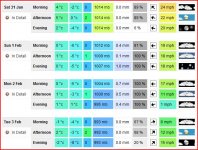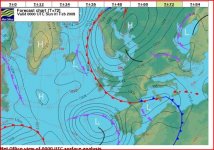Just as a couple of examples:
Mid May '92 - a high to the east and a low out in the Atlantic produced long range south easterly winds and some places were knee deep in RF Falcons.
Mid May '85 - a Bluethroat arrival in easterlies on the northern edge of a low pressure off the E. Anglian coast. Or May '87 when a high to the north of the UK also let in Bluethroats on easterlies.rus
Although a low pressure to the south of us can also halt the arrival of migrants, as can a high pressure too far to the west of the UK which results in northerly blocking winds. And, conversely, once those northerlies or the low pressure gives way, it opens the floodgates for good numbers of spring migrants. Although, as Pom says, unlike the more leisurely southward progression in autumn, they're in a hurry and you've got to be quick.
Roll on the spring.
Irene






